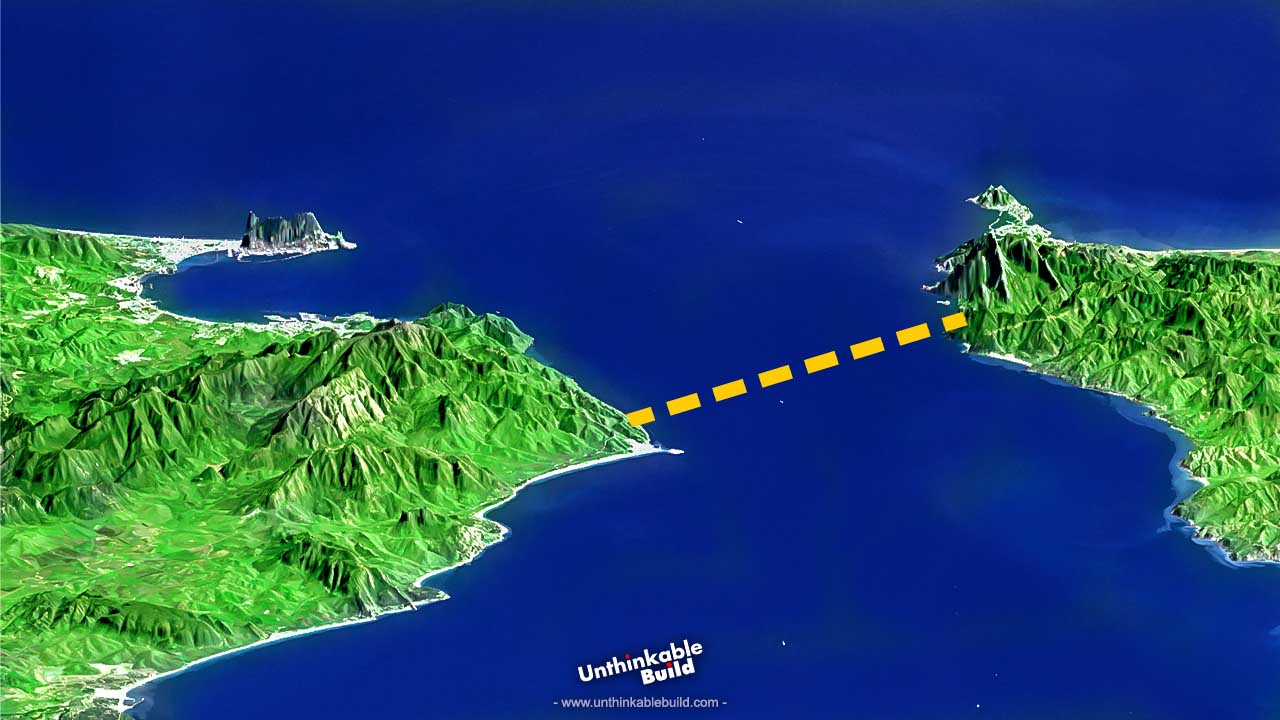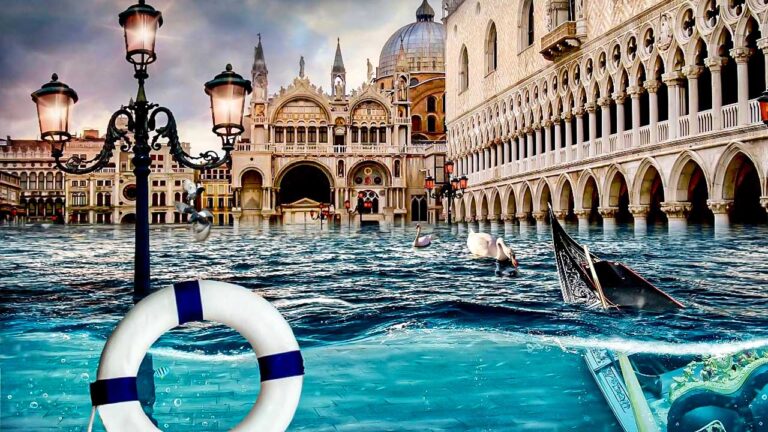Why a Europe-Africa Transport Link Remains Impossible?
Transport between Africa and Europe primarily relies on air and sea routes since there is no direct road access between the two continents. But is this really due to the distance between them? If you look closely at a map, you’ll see that Morocco and Spain, are surprisingly close to each other.
The distance between Point Marroqui at the southern tip of Spain and Point Cires on the northern coast of Morocco is just 13 kilometers. This narrow sea passage, known as the Strait of Gibraltar, connects the Atlantic Ocean to the Mediterranean Sea. Despite its short distance, this passage plays a crucial role in maritime navigation and has a rich history of cultural and economic exchange between Europe and Africa.
So, why hasn’t this 13-kilometer gap been bridged? While there have been discussions and plans to connect these two continents more directly, the fact remains that Spain and Morocco, despite being so close, still lack a road connection. This leaves two significant countries facing each other across the water, yet without a direct l-nd route to link them.
Thanks to modern technology, engineers have created some truly remarkable bridges over seas around the world. One standout is the Hong Kong-Zhuhai-Macau Bridge, spanning an impressive 55 kilometers.
Closer to home in California, USA, the San Francisco-Oakland Bay Bridge is an iconic link across the San Francisco Bay. It features two distinct sections: the western span, a majestic suspension bridge, and the eastern span, a unique self-anchored suspension bridge. Together, they stretch approximately 13.5 kilometers.
Let’s now explore the factors that have prevented Africa and Europe from bridging this relatively short distance so far.
The Strait of Gibraltar is a bustling seaway, with about one hundred thousand ships navigating its waters every year, playing a vital role in global trade. The dream of building a bridge across this strait has been around for decades, but despite many proposals and technological advancements, the 13-kilometer gap remains a significant challenge for engineers and planners.
Efforts to connect Spain and Morocco by road have been in the works for a long time. If this project were to succeed, it could bring countless benefits, including boosting the economy and tourism, and making travel between the two continents much easier.
Why has progress on this historic project stalled, and what obstacles are hindering the connection between Europe and Africa? To understand, let’s look at the sea passage between these two continents. The Strait of Gibraltar is about 365 meters deep, and building tower for a bridge in such deep waters means we need extremely large and strong foundations. This step is harder than it looks. The seabed here is full of unstable mud rocks, making it tough for any solid structure to stay put. To secure the bridge pylons, they’d need to be anchored several hundred meters into the seabed. This isn’t just a technical challenge; it’s also expensive and would take a lot of time.
Also Read: World’s Largest Artificial Rivers Under Construction in 2024
Moreover, we need to consider the strong underwater currents in this area, which connect the Mediterranean Sea and the Atlantic Ocean. Water flows from the Atlantic into the Mediterranean with great force to maintain a uniform water level, as the Mediterranean’s water level keeps dropping due to year-round evaporation. These powerful currents and waves could potentially destroy any structure in their path.
Construction experts say that building a bridge between Spain and Morocco, while tackling all these challenges, will need specialized equipment and techniques to keep the project and workers safe. Even if we come up with a great plan to manage the uneven seabed and strong currents in the Strait of Gibraltar, other problems will still be there. The biggest one is the heavy traffic of massive commercial ships in the strait, with more than 100,000 passing through each year. These ships and oil tankers present continuous logistical and safety challenges that must be meticulously resolved to protect the bridge’s structural integrity and operational effectiveness.
Moreover, because these ships are vital for international trade, it’s important to keep the bridge high enough to avoid blocking commercial traffic. This means the bridge should be at least 100 meters above sea level so that ships of all sizes can pass underneath without any trouble. Building a bridge like this is a huge engineering feat, and it also needs to be sturdy enough to withstand an accidental ship collision.
But the challenges don’t stop there. The Strait of Gibraltar lies at the meeting point of the Eurasian and African tectonic plates. This geological setting makes the area prone to frequent seismic activity, including earthquakes. These natural events can pose significant risks to large-scale construction projects, complicating efforts to build durable and safe structures in the region.
Given this, any construction project between Morocco and Spain on the Strait of Gibraltar needs to be sturdy enough to handle a severe earthquake. This involves using special engineering techniques like flexible foundations, shock absorbers, and reinforced materials to keep the structure safe and stable. However, using these advanced methods makes the project much more expensive and complicated.
In various parts of the world, building bridges has posed significant challenges, prompting experts to suggest tunnels as viable alternatives for transportation. Underwater tunnels, in particular, offer benefits such as unimpeded ship navigation. However, constructing a tunnel in the Strait of Gibraltar is a complex endeavor that presents unique challenges and isn’t easily resolved.
One of the most fascinating underwater tunnels is Japan’s Seikan Tunnel, linking the islands of Honshu and Hokkaido. This remarkable structure, finished in 1988, spans an impressive 53.85 kilometers and lies approximately 240 meters below sea level. Despite its challenges, including stable seabed geology, it contrasts sharply with the conditions in the Strait of Gibraltar.
The seabed here is really rough, which makes traditional tunneling methods impossible due to submerged mud rocks. Given these challenges, engineers came up with a creative solution for the Strait of Gibraltar: they plan to build a floating tunnel using modern technology, situated about 100 meters below sea level. To keep it steady, the tunnel will be anchored with cables secured to the seabed. This design not only makes it easier for ships to navigate through the strait but also ensures the tunnel can withstand the strong waves of the sea.
Also Read: Dubai Green Spine: A 64-Kilometer-Long Green Highway for Dubai
While there are significant technical and engineering challenges to overcome, the project is also entangled in political and financial complexities. The ongoing political tensions between Morocco and Spain over disputed territories must be resolved to pave the way for a feasible land connection between the continents. This necessitates extensive negotiations and agreements between the two nations.
Adding to the complexity, the financial burden of the project is substantial. Experts suggest that building a bridge or tunnel between Morocco and Spain could cost anywhere from $5 billion to potentially $20 billion. This wide range reflects the intricate design considerations, the challenging conditions of the Strait of Gibraltar, and the high standards required for safety and operational efficiency. These financial demands highlight the need for meticulous planning and international collaboration to successfully bring this ambitious infrastructure project to fruition.
For projects of this magnitude, securing financial support is crucial not just from the two governments but also from the global community. Yet, despite its necessity, the potential economic gains of such initiatives haven’t been thoroughly assessed. Building a bridge or tunnel between Point Marroqui and Point Cires has been a longstanding regional priority. This endeavor could potentially make history as a landmark project and is anticipated to foster stronger relations between the two continents involved.
A $25 billion project is currently being reviewed to connect Europe and Africa through the Strait of Gibraltar via bridge or tunnel, bringing a centuries-old dream closer to reality. We would love to hear your thoughts on this ambitious plan. Please share your opinions in the comments section below, and make sure to subscribe to our channel for more exciting updates and videos about mega plans around the world.







